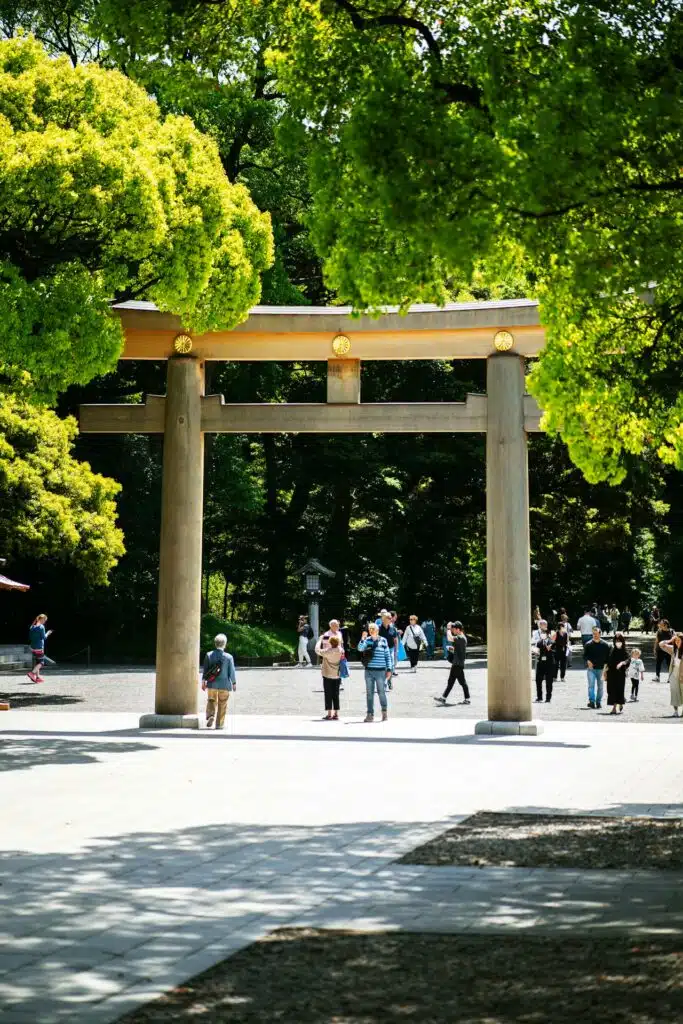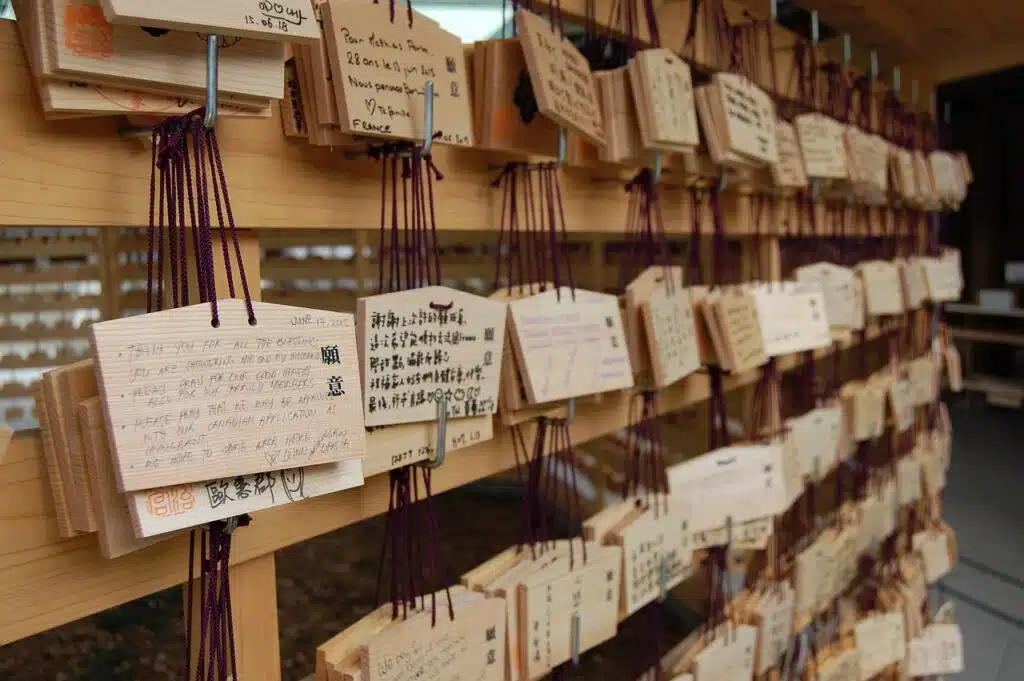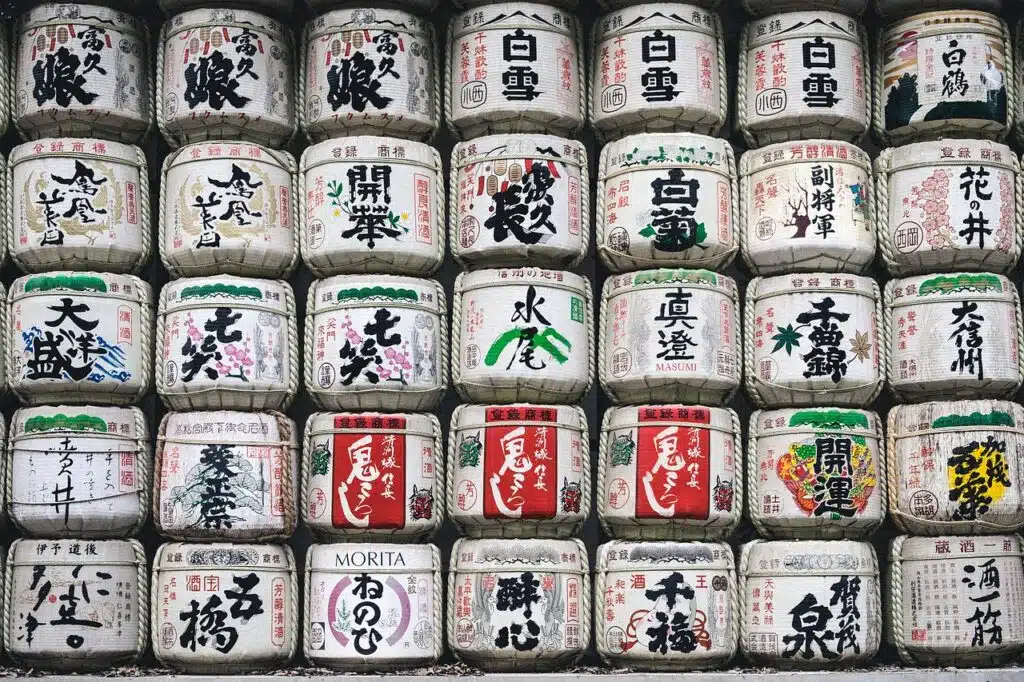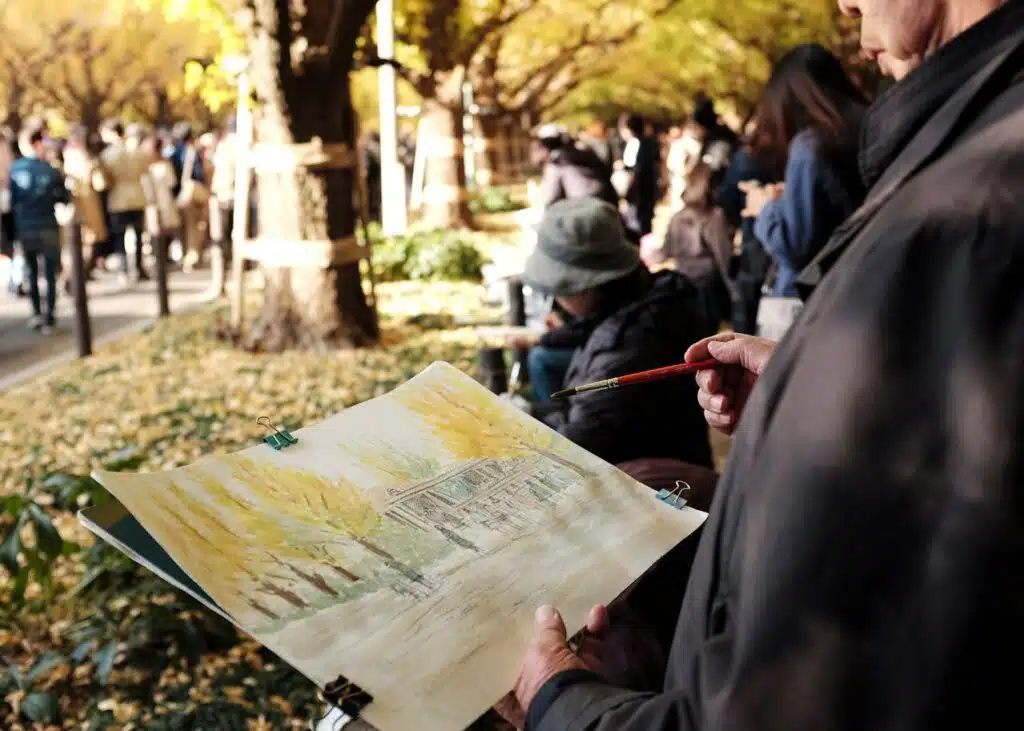Meiji Shrine (Meiji Jingu) is one of Tokyo’s most revered Shinto shrines, dedicated to Emperor Meiji and Empress Shoken, who played pivotal roles in the modernization of Japan during the late 19th and early 20th centuries. Nestled in a lush forested area in the heart of Tokyo, the shrine offers a tranquil escape from the bustling city and provides a deep insight into Japan’s spiritual and cultural heritage.


What to See at Meiji Shrine
- Main Torii Gate: The entrance to Meiji Shrine is marked by a grand wooden torii gate, which stands as a symbol of the sacred space that lies beyond. This massive gate, made from natural cypress wood, creates a striking first impression and frames the path leading to the shrine.
- Outer and Inner Grounds: The shrine is set within a vast 700,000-square-meter forested area, providing a serene environment for visitors. The outer grounds are accessible to the public and feature walking paths that lead through a lush forest of over 100,000 trees, offering a peaceful and refreshing atmosphere.
- Main Shrine Building (Honden): The central building, or honden, is an elegant wooden structure where rituals and ceremonies are conducted. The shrine’s architectural style is traditional Shinto, characterized by its simplicity and use of natural materials.
- Ema and Omamori Stalls: Near the main shrine, you can find stalls selling ema (wooden plaques where visitors write their wishes) and omamori (protective amulets). Ema can be hung on racks near the shrine, while omamori can be carried for personal protection and good fortune.
- Shinwaen Garden: Adjacent to the shrine is Shinwaen, a traditional Japanese garden with a serene pond and seasonal flora. It’s a lovely spot to relax and enjoy the natural beauty of the shrine’s surroundings.
- Meiji Memorial Picture Gallery: Located near the shrine, this gallery features historical photographs and exhibits related to Emperor Meiji and Empress Shoken. It provides additional context and insight into their lives and the era they influenced.
- Weddings and Ceremonies: If you’re lucky, you might witness a traditional Shinto wedding ceremony taking place at the shrine. These ceremonies, with their elaborate costumes and rituals, offer a fascinating glimpse into Japanese cultural traditions.


Tips for Visiting Meiji Shrine
- Best Time to Visit: Early mornings or late afternoons are ideal times to visit Meiji Shrine to avoid crowds and fully appreciate the tranquility of the grounds. Weekends and public holidays can be busy, especially during special events and festivals.
- Respect Traditions: When visiting the shrine, follow Shinto customs, such as cleansing yourself at the purification fountain (temizuya) before entering. Use the ladle to wash your hands and rinse your mouth, then return the ladle to its place.
- Dress Modestly: As a place of worship, it’s respectful to dress modestly when visiting the shrine. Avoid wearing revealing or overly casual attire to show proper respect for the sacred space.
- Photography: Photography is generally allowed in the outer grounds and surrounding areas, but be mindful of signs indicating restrictions near the main shrine building and during ceremonies. Always be considerate of others who are there for prayer and reflection.
- Participate in Traditions: Engage in traditional practices such as writing your wishes on ema (wooden plaques) and participating in prayer rituals. It’s a meaningful way to connect with the cultural and spiritual aspects of the shrine.
- Explore the Grounds: Take time to explore the extensive grounds of the shrine. The forested pathways are peaceful and offer a refreshing break from the city’s hustle and bustle. The walk from the main torii gate to the shrine is a serene experience in itself.
- Seasonal Events: Check if there are any seasonal festivals or events taking place during your visit. Major Shinto festivals and celebrations at Meiji Shrine can be lively and offer unique cultural experiences.
- Getting There: Meiji Shrine is conveniently located near Harajuku Station, which is served by the JR Yamanote Line. From the station, it’s a short walk through the forested approach to the shrine, making it easily accessible.
Why Visit Meiji Shrine?
Meiji Shrine offers a peaceful retreat within Tokyo’s urban landscape, allowing visitors to experience Japan’s Shinto traditions and spiritual heritage. The serene natural setting, combined with the shrine’s historical significance and cultural practices, provides a meaningful and enriching visit. Whether you’re interested in Japanese spirituality, cultural traditions, or simply seeking a tranquil escape, Meiji Shrine is a must-visit destination that captures the essence of Japan’s rich spiritual and cultural landscape.










